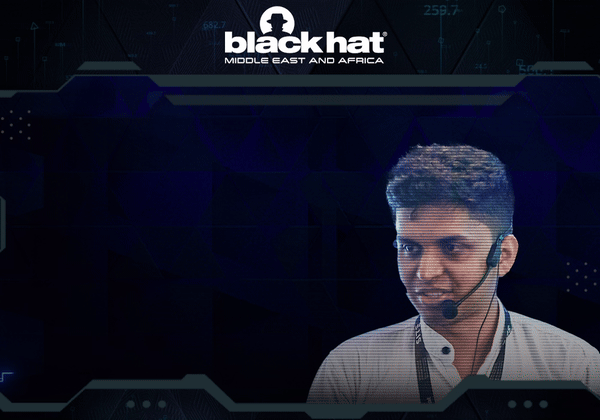
Where CFOs plan to spend – and what it means for cyber
New data shows where CFOs are putting their money – and how CISOs can position cybersecurity amid AI hype and tech transformation pressures.
Read More
Welcome to the new 160 cyber warriors who joined us last week. Each week, we'll be sharing insights from the Black Hat MEA community. Read exclusive interviews with industry experts and key findings from the #BHMEA23 stages.
Keep up with our weekly newsletters on LinkedIn — subscribe here.
The value of turning in the other direction to find new problems that need to be solved – or new solutions to problems that haven’t been solved.
Because we interviewed Owais Shaikh (Security Researcher at RedHunt Labs), and he said:
“See what nobody is paying attention to. We often have this insecurity that everything is already being solved by smarter people and that we have nothing to offer. But if you’re zealous enough and read tons of research papers, clone tons of tools from GitHub and play with computers, you’ll eventually find loopholes everywhere – and learn how to either exploit them or fix them.”
And it reminded us of something Terry Gilliam (British Comedian and Filmmaker) said once: that when you see a crowd walking in one direction you should turn around and walk the other way. Because that’s how you’ll stumble across the most interesting stories.
Perhaps sometimes, the same is true in cybersecurity. All the noise and big security stories of the moment distract us from other things that are happening – things that are also important, and worth solving.
Security researchers are pretty good at not getting too caught up in the big news of the moment. Good researchers are always scanning the environment for vulnerabilities and threats that other people haven’t noticed yet.
Different researchers have their own methods – no two of them work in exactly the same way.
But generally speaking, their methods include:
Whether researchers are working for one particular organisation or looking at the threat landscape more broadly, they take a comprehensive and data-driven approach – but they also put people at the centre of their work. They know that humans are often the weakest link in cybersecurity, and they strive to make that link stronger.

All of the above strategies can help a researcher to look beyond the problems that most people are focusing on – and identify new threats, new vulnerabilities, and new solutions.
There will never be a day when every problem in cybersecurity has been solved.
And ‘turning the other way’ might look like…
In short: if you want to be an excellent researcher, don’t be swayed by the tide of trends. Be ready to swim against that tide and put yourself in deeper water. Because it’s there that you’ll find something no one else has spotted – and that’s how you can make your mark on the cybersecurity sector.
Read our full interview with Owais Shaikh: How do you build a career as a cybersecurity researcher?
Do you have an idea for a topic you'd like us to cover? We're eager to hear it! Drop us a message and share your thoughts. Our next newsletter is scheduled for 01 May 2024.
Catch you next week,
Steve Durning
Exhibition Director
Join us at Black Hat MEA 2024 to grow your network, expand your knowledge, and build your business.
Join the newsletter to receive the latest updates in your inbox.

New data shows where CFOs are putting their money – and how CISOs can position cybersecurity amid AI hype and tech transformation pressures.
Read More
In Dune, power flows to the one who can destroy a thing. In cybersecurity, attackers now hold similar leverage over identity and systems.
Read More
A contrarian take on AI in 2026: why security teams may actually need AI to become dull, predictable, and standardised – and how that shift could reduce risk.
Read More